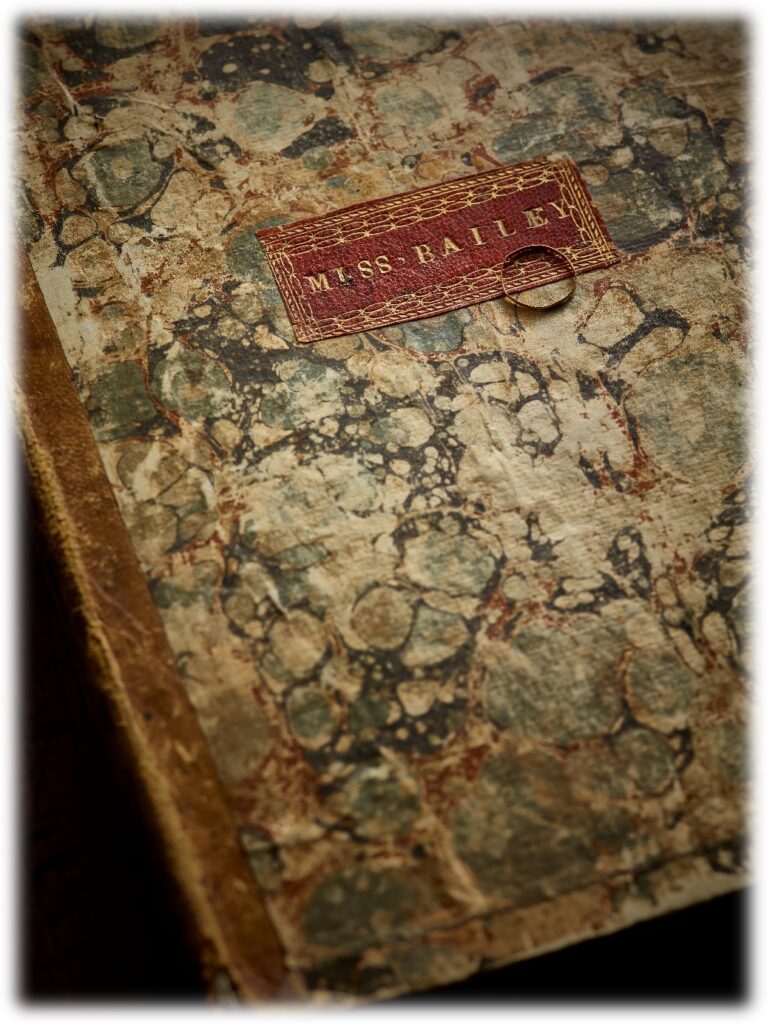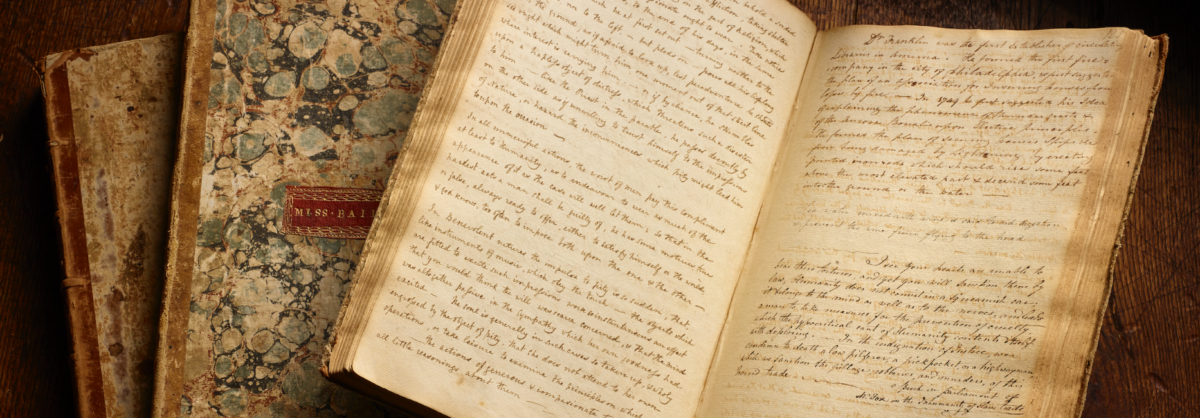The National Shrine of Saint Elizabeth Ann Seton is highlighting artifacts in its new museum and their significance in the life of the first person born in America to become a saint.
What is it:
Commonplace books were a means of compiling and preserving knowledge, serving as a repository for various items such as notes, proverbs, poems, history, science, letters, and prayers. These volumes were utilized by readers, writers, students, and scholars to record and remember useful concepts or facts. Sometimes, commonplace books were required by young women as evidence of their mastery of social roles and to demonstrate the correctness of their upbringing. They could span many years.
Elizabeth Ann Seton has three books, listed as School Books 30, 31, and 32, in the Daughters of Charity archives. Book 32 will be the first to display in the new Seton Museum, opening on September 22, 2023.

Book 30
This copybook predominantly contains Elizabeth’s writings from 1791, 1793, and 1794, although several excerpts are copied by her daughter Catherine. Measuring 8″ x 16″ and comprising 161 pages (with 30 pages left blank). This volume includes excerpts from Charles Rollin’s works on ancient history, Greek history, and the history of England.
Book 31
Primarily filled with poetry, this book features selections from writers such as William Shakespeare, John Milton, Robert Burns, and other notable 18th-century British poets. Measuring 8″ x 16″ and containing 87 pages of handwritten entries, it showcases selections from 58 authors.
In a letter to her daughter Anna Maria, Elizabeth expressed her fondness for this book:
“This book was began when I was fifteen and written with great delight to please my father- Since I have been a mother the idea of continuing it for my Children’s instruction and amusement as well as to give them an example of a good means of adding to the pleasure of Study and assisting the memory has been one of my favorite fancies.”

Book 32
At the beginning of this commonplace book, an inscription reads “VIVONS UNIS,” which translates to “Let us live united.” The same phrase appears inside the back cover.
This particular volume was utilized by Elizabeth, her father, Dr. Richard Bayley, and her daughter Catherine. Spanning from 1760 to 1817, the copybook measures 8″ x 16″ and contains 292 pages of copied material. Its contents encompass a wide range of philosophical, historical, religious, and scientific topics. This book offers insights into Elizabeth’s education and her areas of interest. It also reveals the thoughts of Dr. Richard Bayley, who would become a prominent physician to Catherine’s education at St. Joseph’s Academy. Book 32 provides glimpses into the pivotal moments of Elizabeth’s life.
Book 32 passage: Mary Wollstonecraft’s writings
Mary Wollstonecraft, an English writer and fervent advocate for educational and social equality for women, outlined her beliefs in “A Vindication of the Rights of Woman” in 1792. Wollstonecraft’s thoughts on a woman left widowed with children especially resonated with Elizabeth. It is believed that Elizabeth transcribed this passage after 1803, a time of transition for her. It was a period marked by her adjusting to single motherhood, navigating societal changes, and reflecting on her decision to embrace Catholicism, which would profoundly alter the course of her life and that of her children. The passage contains the following excerpt:
“Fate however breaks this tie. She is left a widow, perhaps without a sufficient provision; but she is not desolate! The pang of nature is felt; but after time has softened sorrow into melancholy resignation her heart turns to her children with redouble fondness and anxious to provide for them, affection gives a sacred heroic cast to her maternal duties. She thinks that not only the eye sees the virtuous efforts from whom all her comfort now must flow, and whose approbation is life; but her imagination a little abstracted and exalted by grief, dwells on the fond hope that the eyes which her trembling hand closed, may still see how she subdues every wayward passion to fulfil the double duty of being the Father as well as the mother of her children —- I think I see her surrounded by her children, reaping the reward of her care. The Intelligent eye meets hers whilst health and Innocence smile on their cubby checks, and as they grow up the cases of life are lessened by their grateful attention. She lives to see the virtues which she endeavoured to plant on principles, fixed into habits, to see her children attain a strength of character sufficient to enable them to endure adversity without forgetting their Mothers example.”
For more information about the National Shrine of Saint Elizabeth Ann Seton and its remarkable collection, please visit www.setonshrine.org.
